Rearranging Equations Math Worksheets
Manipulating Equations
Grades: 6th Grade
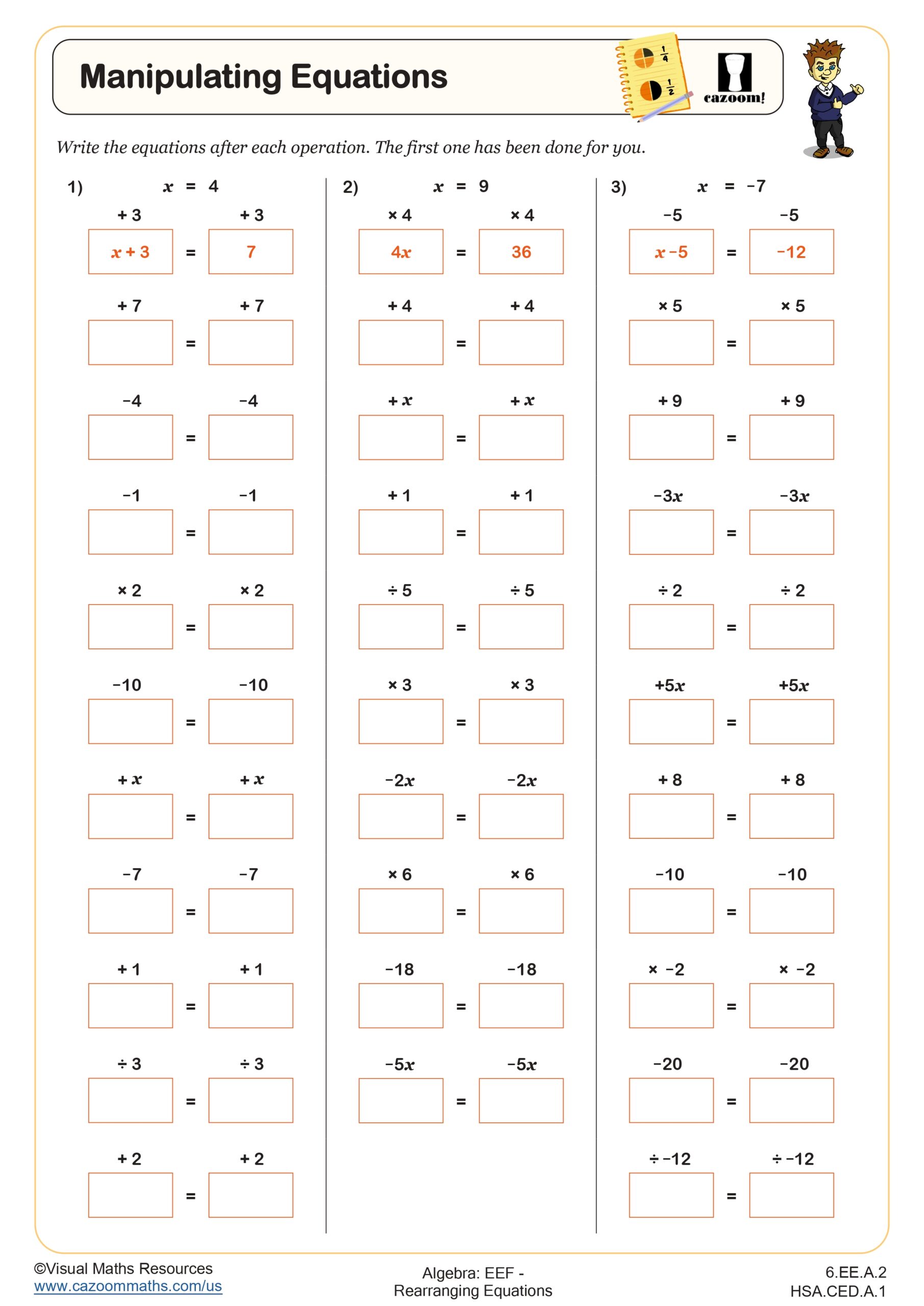
Literal Equations (A) - Rewriting to Solve for a Variable
Grades: Algebra I, IM 1
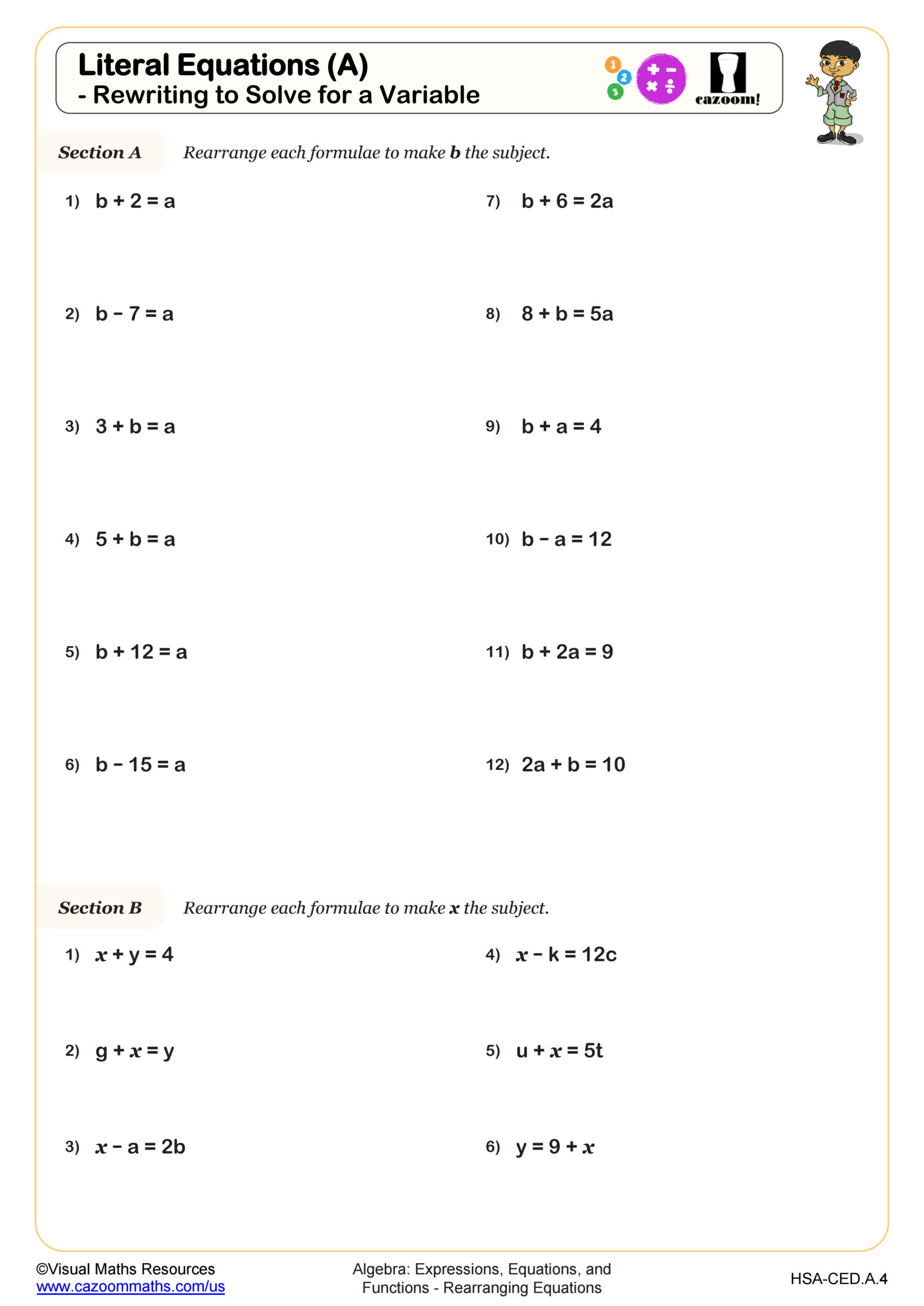
Literal Equations (B) - Rewriting to Solve for a Variable
Grades: Algebra I, IM 1
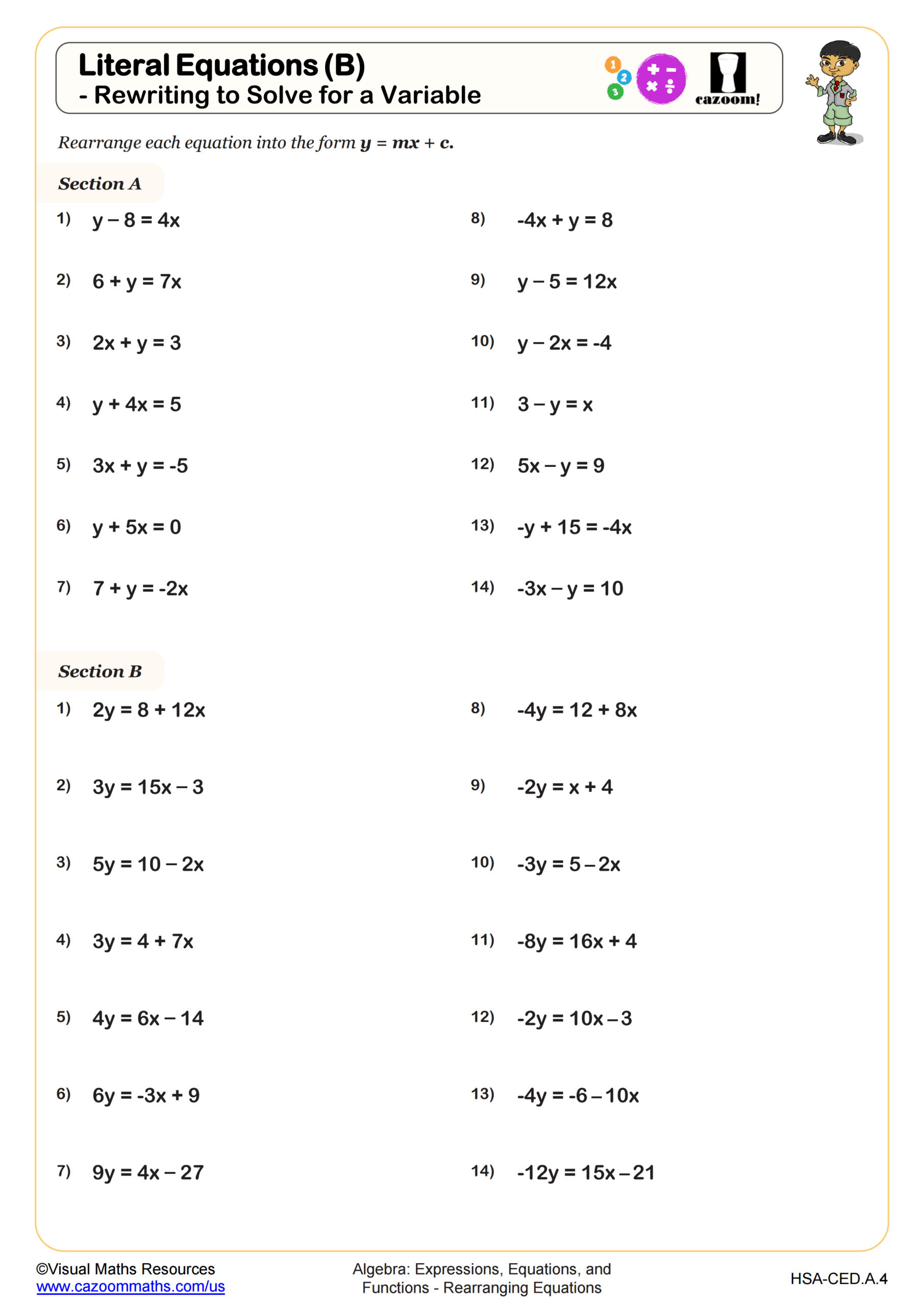
Literal Equations (C) - Rearranging Formula
Grades: Algebra I, IM 1
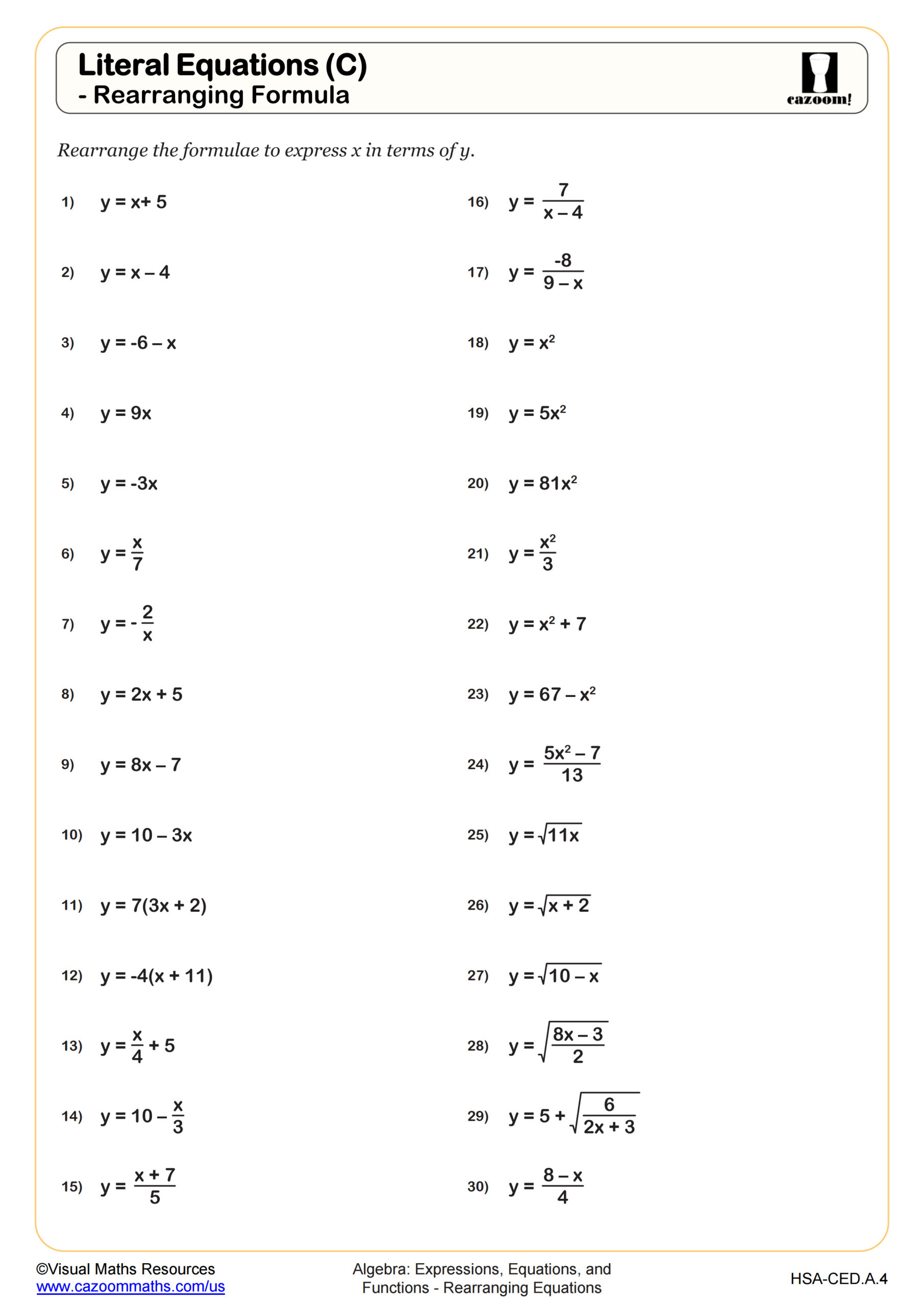
Literal Equations (D) - Rearranging Formula
Grades: Algebra I, IM 1
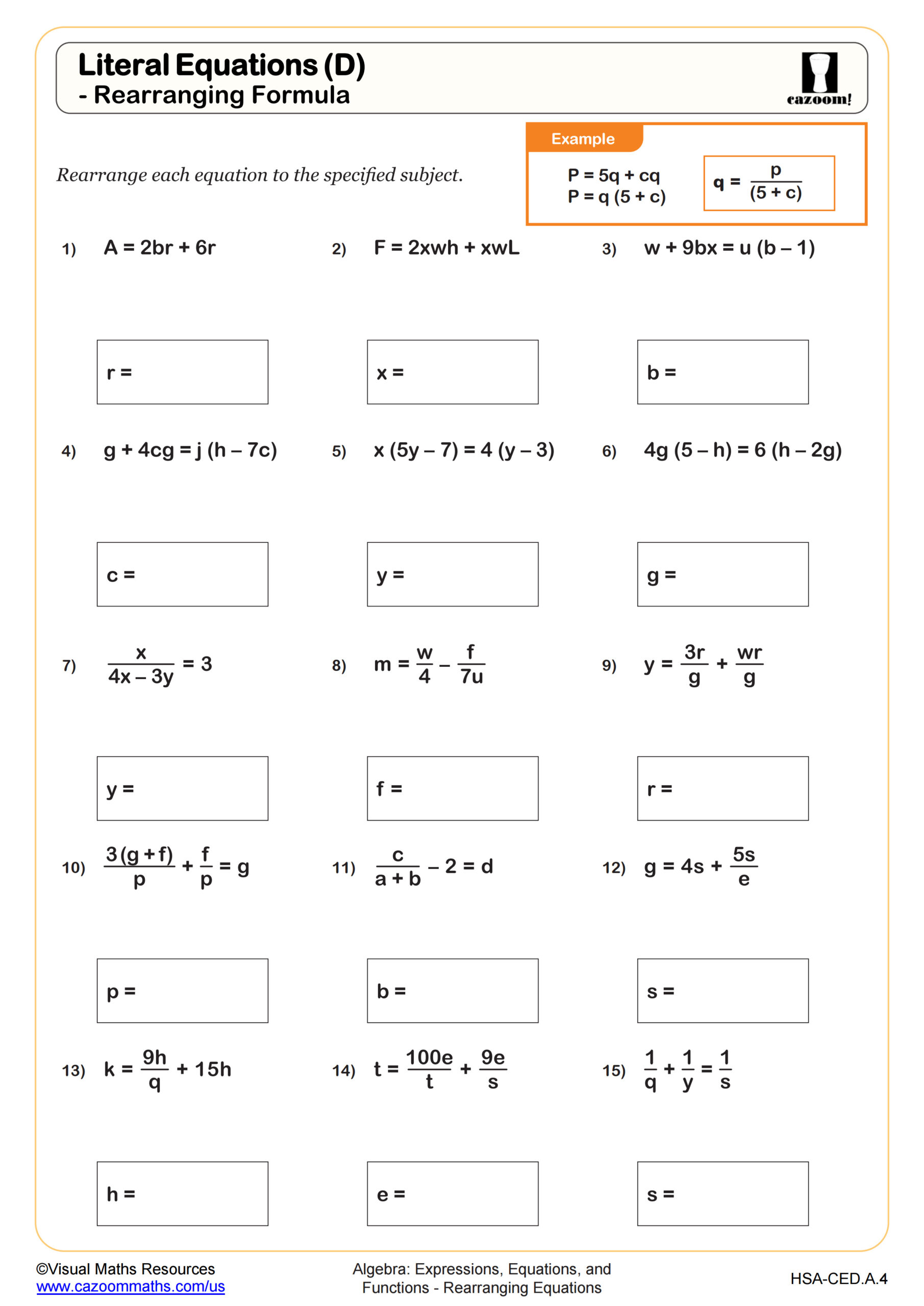
Printable Rearranging Equations Worksheets for High School Students
All of our resources on rearranging algebraic equations are in PDF format, allowing them to be easily downloaded and printed. We offer a variety of activities to help students master rearranging equations, including a wealth of practice questions and some entertaining tasks involving changing the subject of formulae. Use Cazoom Math for quality rearranging equations worksheets which prepare students for any question they might face.
Rearranging Equations: The Math You Need When You Need It
Rearranging equations is one of the most essential skills for learning algebra and understanding algebraic formulae.
Many students have trouble with this concept when they are first introduced to it, but with enough practice, any young mathematician can learn how to rearrange equations and make them solvable.
The general idea behind rearranging formulas is to isolate the variable. Let’s take the simple equation,
𝑥
−
3
3
=
12
3
x−3
=12 as an example. As students who have already been introduced to more basic algebraic concepts will note, “x” is the variable in this formula, which means its value is unknown. The idea is to get the “x” on one side of the equation so that students can figure out its value.
There is a set of rules that must be followed when manipulating equations. Once students have a basic grasp of these rules by using Cazoom Math worksheets, they can begin to practice solving for variables themselves.
What Are Mathematical Inverses
Mathematical inverse refers to undoing operations.
This part of rearranging formulas involves taking any operation involving the variable and performing its inverse. The inverse of adding is subtracting, the inverse of multiplying is dividing, and the inverse of squaring is square rooting.
Students can use mathematical inverses to rearrange equations by performing the inverse operation on both sides. If they do this correctly, they will eventually wind up with the variable isolated on the left side of the equation and the information required to solve it on the right.
Using Flowchart Method
One simple method for rearranging formulae is known as the flowchart method. Students can use this method to determine how equations are built. Create the flow chart by putting the variable in one box.
Next, determine the order of operations using the information found below to fill in subsequent boxes, adding one operation to each. By the end, it will break down the formula to produce the required expression.
Once this part of the flowchart has been completed, replace the expression in the final box with the known result. Follow the flow chart backward using an identical order of operations until the formula has been rearranged completely. Eventually, it will produce the value of the variable.